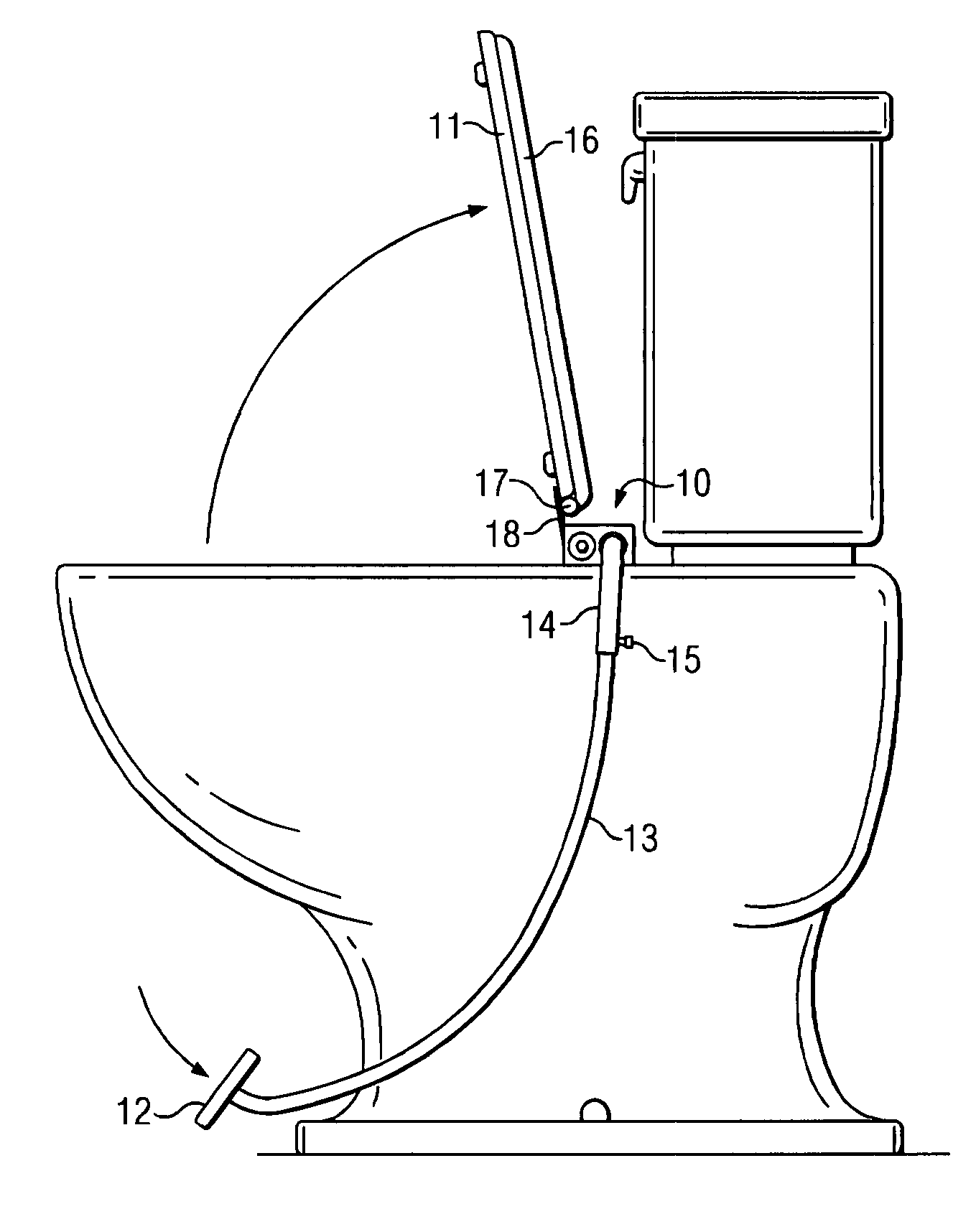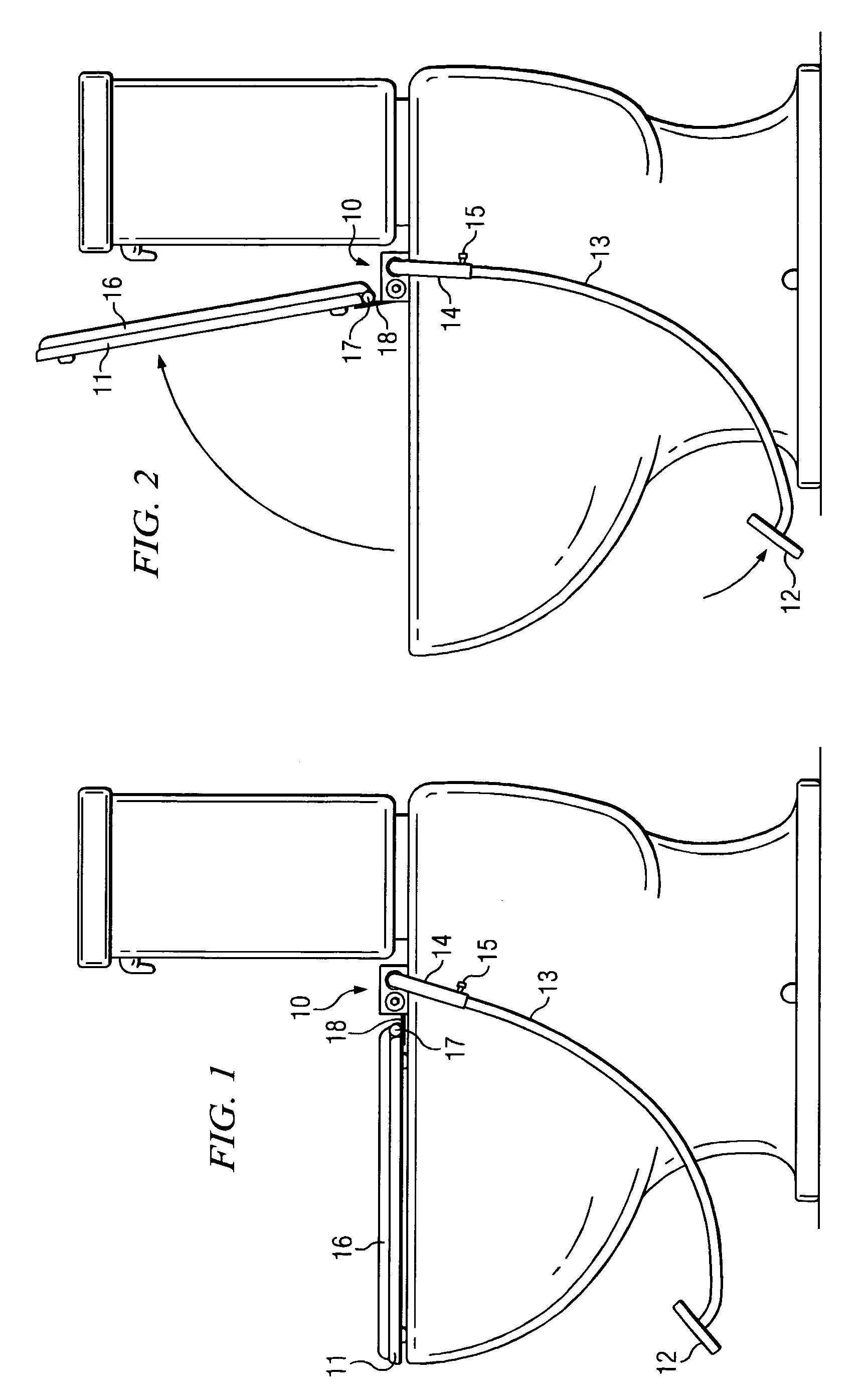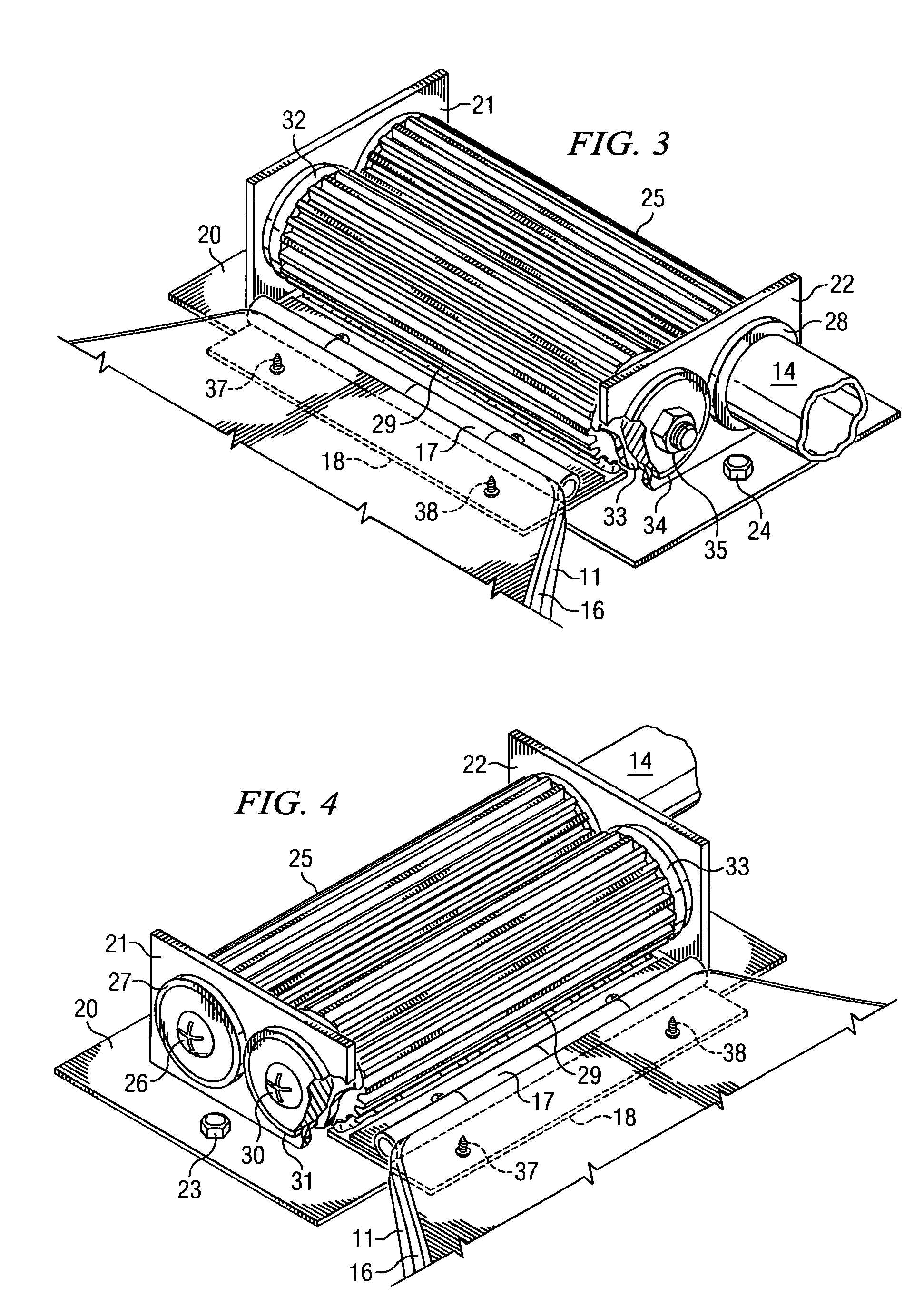Foot-operated toilet seat
a toilet seat and foot-operated technology, which is applied in the field of foot-operated mechanism for raising the toilet seat, can solve the problems of unfettered access to the toilet bowl, and achieve the effects of convenient installation, low cost, and simple structur
- Summary
- Abstract
- Description
- Claims
- Application Information
AI Technical Summary
Benefits of technology
Problems solved by technology
Method used
Image
Examples
Embodiment Construction
[0016]Referring to FIG. 1, a foot-operated mechanism 10 is shown in a side perspective, mounted on a typical toilet, just in front of the tank, on the rear edge of the toilet bowl. In a lowered position, the toilet seat 11 rests on the edge of the toilet bowl, with the foot pedal 12 in a normal position above the floor. The lower lever 13 to which the foot pedal 12 is attached is slightly smaller in diameter than an upper lever 14, allowing for an adjusting friction screw 15 to be used to adjust the extension length of the lower lever 13, and thus the distance from the foot pedal 12 distance above the floor. A toilet seat cover 16 is mounted on a hinge 17 just to the rear of the toilet seat and on top of a metal flange 18.
[0017]FIG. 2 depicts the foot-operated mechanism 10 shown in a side perspective with the toilet seat 11 in a raised position. Note that as the foot pedal 12 is depressed, the toilet seat 11 and toilet seat cover 16 are lifted into the raised position.
[0018]FIG. 3 d...
PUM
 Login to View More
Login to View More Abstract
Description
Claims
Application Information
 Login to View More
Login to View More - R&D
- Intellectual Property
- Life Sciences
- Materials
- Tech Scout
- Unparalleled Data Quality
- Higher Quality Content
- 60% Fewer Hallucinations
Browse by: Latest US Patents, China's latest patents, Technical Efficacy Thesaurus, Application Domain, Technology Topic, Popular Technical Reports.
© 2025 PatSnap. All rights reserved.Legal|Privacy policy|Modern Slavery Act Transparency Statement|Sitemap|About US| Contact US: help@patsnap.com



